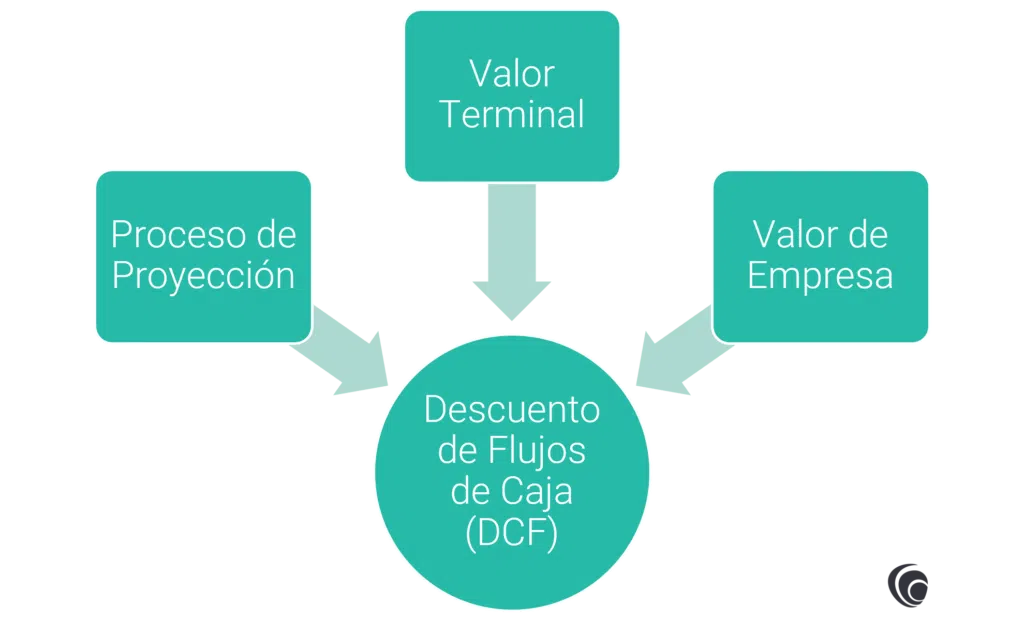The Discounted Cash Flow (DCF) method is undeniably one of the most prevalent and relied-upon approaches for valuing businesses. Its widespread use stems from its ability to provide a comprehensive framework for assessing a company's intrinsic worth by discounting projected future cash flows to present value. However, despite its popularity, the DCF is not immune to flaws.
Like any valuation method, it heavily relies on a multitude of assumptions, making it susceptible to inaccuracies. The sensitivity of the Discounted Cash Flows to these assumptions often leads to skepticism among some buyers, who may question the reliability of the calculated values. Nonetheless, there are compelling reasons to utilize DCF in business valuation Business Valuation, as it offers a structured approach to understanding a company's fundamentals, revenue sources, expenditure patterns, and potential synergies.
In this how-to, we delve into the critical aspects of the DCF method and explore strategies for conducting sanity checks to ensure the validity of the valuation outcomes. We will focus on three primary areas where DCF evaluations typically require scrutiny: the projection period, the terminal value, and the overall enterprise value.
Before dissecting the specific components of a DCF valuation, it is crucial to grasp the nature of assumptions inherent in the process. Assumptions serve as the foundation upon which the valuation model is built, reflecting the evaluator's projections and expectations regarding the future performance of the business. These assumptions span various dimensions, encompassing commercial, operational, and financial aspects of the enterprise. They dictate parameters such as sales growth rates, profit margins, operational costs, and long-term growth prospects.
Despite their significance, assumptions are inherently subjective and speculative, lacking the certainty of precise prediction. Consequently, the validity of a Discounted Cash Flows valuation hinges on the reasonableness and coherence of these assumptions, grounded in factual evidence and logical reasoning.

The projection period represents the timeframe over which future cash flows are forecasted, forming the basis for the DCF valuation. The main risk associated with this phase lies in the realism and feasibility of the projections. Unrealistic assumptions regarding sales growth rates, operational expenses, and market dynamics can distort the valuation outcomes, inflating or deflating the estimated enterprise value. Therefore, meticulous attention must be paid to ensure that the projected cash flows align with the underlying business realities and industry norms.
Validating the projections necessitates a two-pronged approach: a granular examination of the business's operational dynamics and a holistic assessment of the projections' reasonableness. While detailed financial modeling is essential for constructing accurate projections, it is equally crucial to step back and assess the projections from a strategic perspective. Questions such as "Can the business realistically achieve this level of growth?" and "What are the potential risks and challenges?" should guide this evaluation process. Moreover, involving the operational team responsible for executing the business plan is indispensable, as their insights and expertise are instrumental in refining the projections and addressing potential blind spots.
The terminal value represents the perpetual stream of cash flows beyond the explicit projection period and significantly influences the overall DCF valuation. However, its calculation is fraught with sensitivity to assumptions, particularly regarding long-term growth rates. A misjudgment in setting the growth rate can yield drastic variations in the estimated terminal value, thereby distorting the enterprise valuation. Hence, it is imperative to adopt a prudent approach to determine the long-term growth rate and scrutinize its reasonableness through a sanity check.
A commonly employed method to assess the reasonableness of the terminal value is by comparing it to the company's earnings before interest, taxes, depreciation, and amortization (EBITDA) at the end of the projection period. Dividing the terminal value by the projected EBITDA yields an implied EBITDA multiple, which serves as a benchmark for evaluating the validity of the assumptions. If the implied multiple deviates significantly from industry norms or historical precedents, it signals the need to revisit and adjust the assumptions underlying the terminal value calculation.
Once the projections and terminal value have been validated, the focus shifts to assessing the reasonableness of the calculated enterprise value. Comparing the implied revenue and EBITDA multiples derived from the DCF valuation to industry benchmarks or transaction comparables offers a pragmatic approach to gauge the valuation's accuracy. If the implied multiples diverge substantially from market norms or expectations, it warrants a reassessment of the underlying assumptions to ensure alignment with prevailing market dynamics.
Additionally, revisiting the discount rate, a critical determinant of the DCF valuation, is imperative to validate its appropriateness. The discount rate, reflecting the required rate of return for investors, profoundly impacts the valuation outcomes by discounting all future cash flows. As such, any adjustments to the discount rate can significantly alter the calculated enterprise value. Ensuring that the discount rate accurately captures the risk profile of the business and aligns with market benchmarks is essential to bolstering the credibility of the DCF valuation.
hinges on the integrity of underlying assumptions and the rigor of validation processes. By scrutinizing key components such as the projection period, terminal value, and enterprise value through comprehensive sanity checks, buyers can mitigate the inherent risks associated with DCF valuations and make informed decisions.
Moreover, fostering collaboration between financial analysts, operational teams, and stakeholders enhances the robustness of the valuation process, ensuring that the calculated enterprise value reflects the intrinsic worth of the business. Overall, by employing these strategies, stakeholders can leverage the strengths of the Discounted Cash Flows method while minimizing its potential drawbacks, leading to more accurate and reliable business valuations..